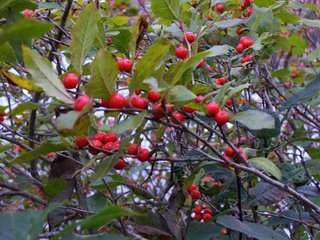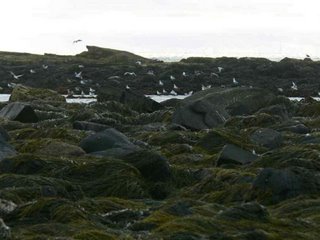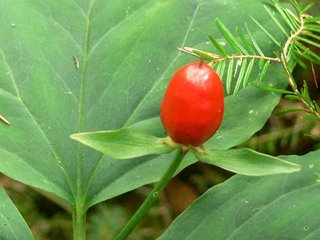 It's warmer than I expected here on the hill. 48 degrees right now, calm as can be with a typical October fog lingering within the trees and hovering 20 feet or so off the ground. Yesterday's rains make the air really smell like autumn. The birds have started their morning conversations around the house and I can hear a large flock of geese flying over Peacham Pond. They sound like they are heading for the Connecticut River flyway where there is plenty of water, marshlands and fields of recently harvested corn.
It's warmer than I expected here on the hill. 48 degrees right now, calm as can be with a typical October fog lingering within the trees and hovering 20 feet or so off the ground. Yesterday's rains make the air really smell like autumn. The birds have started their morning conversations around the house and I can hear a large flock of geese flying over Peacham Pond. They sound like they are heading for the Connecticut River flyway where there is plenty of water, marshlands and fields of recently harvested corn.I'm getting ready to send some lily bulbs to a friend and it reminded me of a thought that I need to share. Lilies are an easy to grow flower although they must compete with deer which eat the blooms and leaves, voles which consume the bulbs, chipmunks which eat what they please and the lily leaf beetle which destroys everything in short order. Just the same they are a beautiful flower.
Over the years we have grown tens of thousands of lilies to the point we don't really even know how many we have grown. To a real grower the numbers are a laugh but for Vermont it has been an interesting journey growing something which other retailers hadn't yet caught up with. Since we started in the early 80's the hybridizing has really expanded with tough new Oriental and Trumpet crosses.
Last evening just before dark I cleaned up some lilies which we had planted in pots. Leslie Woodriff was one. The bulbs had more than doubled in size over the summer and some had produced offshoots which looked quite strong. The summer rains and warm weather likely contributed to the good harvest. The bulbs in the picture above are robust and will produce great stems next summer.
I recommend to folks that they divide their lilies in the fall. They dig up easily after a few fall rains and the stems pull out after a couple good frosts. The stems on these Leslie Woodriff bulbs were over 5 feet tall and had held 8-9 blooms in glorious color. The good thing is that there's no way you can injure the new stem which contains all the material for the next season's flowers. In contrast, moving lilies in the spring requires a tad more care. The least cut or tear to the stem's growing tip and the flowers may well be lost for the season. In the fall everything is well protected within the bulb and you can plod along and not have to worry. Dividing out your lilies and rearranging garden colors for next year is easy and like digging potatoes, it's great fun to see how big things have grown.
I'm heading for White River and Windsor today and hope to get back by 4:30. Yesterday was a long trip from Waterbury to Morrisville, Johnson, Cambridge, Underhill Center, Jericho and home. Vermont's small towns are plentiful but traveling through each one is an opportunity to view special treasures. If you haven't been out and about some of Vermont's back roads recently, take a trip and remind yourself that there's no better place than Vermont!
From the mountain above Peacham Pond where Fred the Plumber should be arriving just about the time I depart, and where a young bluejay just stuffed 23 sunflower seeds--and I am still counting-- in his crop.
Gardening wishes,
George Africa
http://vermontflowerfarm.com



















